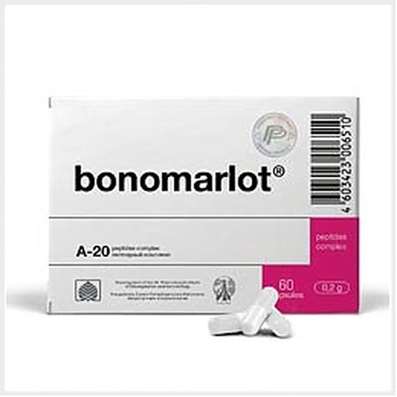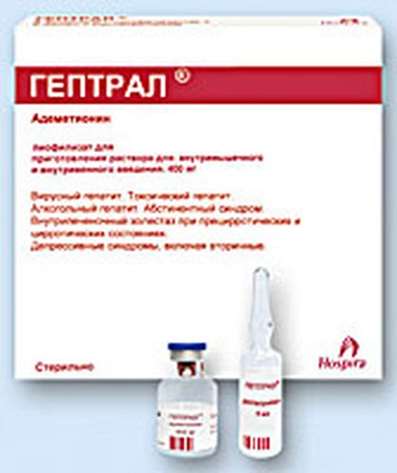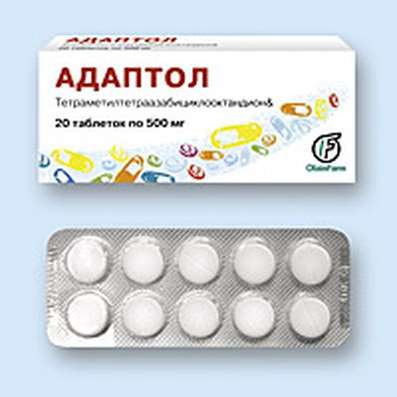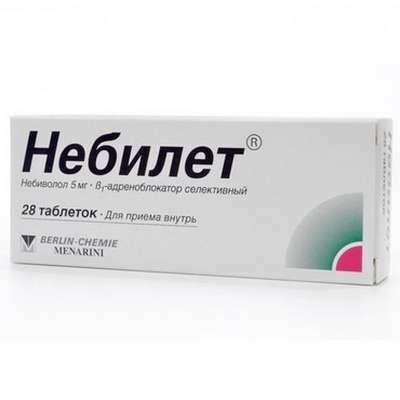Instruction for use: Medxenon
I want this, give me price
Dosage form: gas medical compressed
Active substance: Xenon
ATX
N01AX Anesthetics common others
Pharmacological group:
Means for inhalation of general anesthesia [Anesthetic means]
The nosological classification (ICD-10)
R52.9 Unspecified pain: Pain after cholecystectomy; Pain shooting; Non-malignant pain syndrome; Obstetric and gynecological pain; Pain syndrome; Pain syndrome in the postoperative period; Pain syndrome in the postoperative period after orthopedic operations; Painful syndrome of inflammatory genesis; Pain syndrome of non-oncological genesis; Pain syndrome after diagnostic procedures; Pain syndrome after the diagnostic intervention; Pain syndrome after operations; Pain syndrome after surgery; Pain syndrome after orthopedic surgery; Pain syndrome after trauma; Pain syndrome after removal of hemorrhoids; Pain syndrome after surgery; Pain syndrome with inflammation of non-rheumatic nature; Pain syndrome with inflammatory lesions of the peripheral nervous system; Pain syndrome in diabetic neuropathy; Pain syndrome in acute inflammatory diseases of the musculoskeletal system; Pain syndrome in the pathology of tendons; Pain syndrome with smooth muscle spasms; Pain syndrome with smooth muscle spasms (renal and biliary colic, intestinal spasm, dysmenorrhea); Pain syndrome with spasms of smooth muscles of internal organs; Pain syndrome with spasms of smooth muscles of internal organs (renal and biliary colic, intestinal spasm, dysmenorrhea); Pain syndrome with injuries; Pain syndrome with injuries and after surgical interventions; Pain syndrome in chronic inflammatory diseases of the musculoskeletal system; Pain syndrome with duodenal ulcer; Pain syndrome with peptic ulcer disease; Pain syndrome with peptic ulcer of stomach and duodenum; Painful sensations; Pain during menstruation; Pain syndromes; Painful conditions; Painful leg fatigue; Gum pain when wearing dentures; The pain of exit points of cranial nerves; Painful irregular menstruation; Painful dressings; Painful muscular spasm; Painful growth of teeth; Pain; Pain in lower limbs; Pain in the area of the operating wound; Pain in the postoperative period; Pain in the body; Pain after diagnostic interventions; Pain after orthopedic surgery; Pain after surgery; Pain in the flu; Pain in diabetic polyneuropathy; Pain in burns; Pain in intercourse; Pain during diagnostic procedures; Pain during therapeutic procedures; Pain for colds; Pain with sinusitis; Pain in case of injury; Pain of a traumatic nature; Pain in the postoperative period; Pain after Diagnostic Interventions; Pain after sclerosing therapy; Pain after surgery; Postoperative pain; Postoperative and post-traumatic pain; Post-traumatic pain; Pain when swallowing; Pain in infectious inflammatory diseases of the upper respiratory tract; Pain with burns; Pain with traumatic muscle damage; Pain in case of injury; Pain when extracting a tooth; Pain of traumatic origin; Pain caused by spasm of smooth muscles; Severe pain syndrome; Severe pain syndrome of traumatic origin; Postoperative pain; Postoperative pain syndrome; Post-traumatic pain; Post-traumatic pain syndrome; Torpid pain syndrome; Traumatic pain; Moderate pain; Moderately expressed pain syndrome; Moderate pain syndrome; Polyartralgia in polymyositis
T88.9 Complication of surgical and therapeutic intervention, unspecified: Pain syndrome in the postoperative period; Pain syndrome in the postoperative period after orthopedic operations; Pain syndrome after diagnostic procedures; Pain syndrome after the diagnostic intervention; Pain syndrome after operations; Pain syndrome after surgery; Pain syndrome after orthopedic surgery; Pain syndrome after removal of hemorrhoids; Pain syndrome after surgery; Pain syndrome with an excimer laser; Pain syndrome with injuries and after surgical interventions; Pain syndromes in dental practice; Painful diagnostic interventions; Painful diagnostic manipulation; Painful instrumental diagnostic procedures; Painful instrumental manipulation; Painful treatment procedures; Painful manipulation; Painful dressings; Painful therapeutic interventions; Painful surgical interventions; Pain in the area of the operating wound; Pain in the postoperative period; Pain after diagnostic interventions; Pain after orthopedic surgery; Pain after surgery; Pain during diagnostic procedures; Pain during therapeutic procedures; Pain in orthopedics; Pain in the postoperative period; Pain after Diagnostic Interventions; Pain after sclerosing therapy; Pain after dental interventions; Pain after surgery; Postoperative pain; Postoperative and post-traumatic pain; Pain when extracting a tooth; Inflammation after surgery and trauma; Inflammation after orthopedic surgery; Inflammatory processes after surgical interventions; Inflammatory syndrome after surgery; Festering postoperative fistulae; Operating wound; Complications after tooth extraction; Postoperative pain; Postoperative pain syndrome; Postoperative pain
Z100.0 * Anesthesiology and premedication: Abdominal surgery; Adenomectomy; Amputation; Angioplasty of the coronary arteries; Carotid artery angioplasty; Antiseptic treatment of skin in wounds; Antiseptic treatment of hands; Appendectomy; Atheroctomy; Balloon coronary angioplasty; Vaginal hysterectomy; Venous bypass; Interventions on the vagina and cervix; Interventions on the bladder; Interference in the oral cavity; Reconstructive-reconstructive operations; Hand hygiene of medical personnel; Gynecological Surgery; Gynecological interventions; Gynecological operations; Hypovolemic shock during surgery; Disinfection of purulent wounds; Disinfection of the edges of wounds; Diagnostic Interventions; Diagnostic procedures; Diathermocoagulation of the cervix; Long-term surgeries; Replacement of fistulous catheters; Infection in orthopedic surgical interventions; Artificial heart valve; Kistectomy; Short-term outpatient surgery; Short-term operations; Short-term surgical procedures; Cryotyreotomy; Blood loss during surgical interventions; Bleeding during surgery and in the postoperative period; Laser coagulation Laserocoagulation; Laser retinopathy of the retina; Laparoscopy; Laparoscopy in gynecology; Likvornaya fistula; Small gynecological operations; Small surgical interventions; Mastectomy and subsequent plastic surgery; Mediastinotomy; Microsurgical operations on the ear; Mukinging operations; Suturing; Minor surgery; Neurosurgical operation; Eclipse of the eyeball in ophthalmic surgery; Orchiectomy; Pancreatectomy; Pericardectomy; The rehabilitation period after surgical operations; Reconvalence after surgical intervention; Percutaneous transluminal coronary angioplasty; Pleural Thoracocentesis; Pneumonia postoperative and post traumatic; Preparing for surgical procedures; Preparing for a surgical operation; Preparation of the surgeon's arms before surgery; Preparation of the colon for surgical interventions; Postoperative aspiration pneumonia in neurosurgical and thoracic operations; Postoperative nausea; Postoperative hemorrhage; Postoperative granuloma; Postoperative shock; Early postoperative period; Myocardial revascularization; Resection of the apex of the tooth root; Resection of the stomach; Bowel resection; Resection of the uterus; Liver resection; Small bowel resection; Resection of a part of the stomach; Reocclusion of the operated vessel; Gluing of tissues during surgical interventions; Suture removal; Condition after eye surgery; Condition after surgery in the nasal cavity; Condition after gastrectomy; Condition after resection of the small intestine; Condition after tonsillectomy; Condition after removal of duodenum; Condition after phlebectomy; Vascular Surgery; Splenectomy; Sterilization of surgical instrument; Sterilization of surgical instruments; Sternotomy; Dental surgery; Dental intervention on periodontal tissues; Strumectomy; Tonsillectomy; Thoracic surgery; Total gastrectomy; Transdermal intravascular coronary angioplasty; Transurethral resection; Turbinectomy; Removal of a tooth; Cataract removal; Removing Cysts; Removal of tonsils; Removal of myoma; Removal of mobile milk teeth; Removal of polyps; Removal of a broken tooth; Removal of the uterus; Removal of seams; Urethrotomy; Fistula of the luminal ducts; Frontoetmoidogamotomy; Surgical infection; Surgical treatment of chronic ulcers of extremities; Surgery; Surgery in the anus; Surgery on the large intestine; Surgical practice; Surgical procedure; Surgical interventions; Surgical interventions on the digestive tract; Surgical interventions on the urinary tract; Surgical interventions on the urinary system; Surgical interventions on the genitourinary system; Surgical intervention on the heart; Surgical procedures; Surgical operations; Surgical operations on veins; Surgical intervention; Vascular Surgery; Surgical treatment of thromboses; Cholecystectomy; Partial resection of the stomach; Extraperitoneal hysterectomy; Percutaneous transluminal coronary angioplasty; Percutaneous transluminal angioplasty; Coronary artery bypass grafting; Extirpation of the tooth; Extirpation of infant teeth; Extirpation of pulp; Extracorporeal circulation; Extraction of the tooth; Extraction of teeth; Extraction of cataracts; Electrocoagulation; Endourological interventions; Episiotomy; Ethmoidotomy; Complications after tooth extraction
Composition
Gas compressed 1 cylinder
active substance:
xenon - 99.999%
Description of dosage form
The inert, colorless gas is odorless, does not ignite and does not support combustion.
Pharmachologic effect
Pharmacological action is general anesthetic.
Pharmacodynamics
Xenon is an inert gas used for carrying out inhalation anesthesia with various surgical procedures and painful manipulations. Xenon in relation to oxygen (60:40, 70:30, 80:20) has a strong analgesic and anesthetic effect. After 2 min after the inhalation of xenon arises stage peripheral paresthesias and gipoalgezii on 3rd min - step euphoria and psychomotor activity, the 4th min - stage partial amnesia and analgesia for 5 minutes minutes comes anesthesia stage corresponding to the first level surgical stage of ethereal anesthesia (according to Hydel).
Myorelaxant, analgesic and anesthetic properties of xenon are more pronounced than that of nitrous oxide that provides small conducting operations in the embodiment of the mask mononarkoza preserving spontaneous patient respiration. The parameters of hemodynamics and gas exchange during anesthesia are stable.
Getting out of anesthesia is fast. After 4-5 minutes after switching off the gas, the consciousness returns to the patient with full orientation in the environment.
Pharmacokinetics
General anesthetic, analgesic, miorelaxing and other effects of xenon are directly proportional to its partial pressure in the blood. When inhaled xenon is easily distributed in the lungs, it diffuses rapidly into the blood and because of the low solubility coefficient, its arterial and alveolar concentration equalized quickly. The alveolar Cmin of xenon is 71%.
After discontinuing the supply, xenon is rapidly eliminated from the body through the lungs in unchanged form. After 4-5 minutes, xenon is eliminated from the body through the lungs almost completely. After 2 minutes, the residual alveolar concentration of xenon is 5%, after 5 minutes it decreases to 2%. In the next 4 hours gradual leaching of xenon from the body fluid and the breathing circuit than can be explained somewhat prolonged period of post-operative analgesia after xenon anesthesia.
Indications for the Medxenon
As the gaseous anesthetic agent for pain surgery, painful manipulations, pain relief and pain attacks.
Contraindications
hypersensitivity;
operations on the lungs, trachea and bronchi associated with pneumothorax, in which there is a need to use hyperoxic mixtures;
and operation manipulation conducted under conditions of leaky breathing circuit (in dentistry, in reconstructive operations on the trachea and bronchi);
children's age (under 18 years).
With care: diseases of the nervous system; chronic alcoholism (possibly the emergence of excitement and hallucinations).
Application in pregnancy and lactation
There are reports of pregnancy use.
It should refrain from breastfeeding during lactation with the drug.
Side effects
Xenon does not irritate the respiratory tract, but sometimes there is a feeling of dryness, hoarseness and metallic taste in the mouth.
People who have a predilection for alcohol, have a more pronounced psychomotor activity in the initial period of xenon anesthesia. With an increase in the concentration of xenon or after the administration of sedatives (diazepam, midazolam), psychomotor activity quickly disappears.
Xenon has the ability to diffuse into tissues and fill closed cavities (with pneumothorax, intestinal swelling, air embolism) according to the law of the difference in partial pressure. This feature of xenon should be considered by an anesthesiologist. In connection with the rapid elimination of xenon from the body after the anesthesia, it quickly fills the alveolar space and creates a phenomenon of diffuse hypoxia. To prevent this phenomenon, it is necessary to use auxiliary ventilation for 4-5 minutes after the xenon is turned off.
Interaction
It is combined with any drugs used in anesthetic practice: gaseous anesthetics, narcotic analgesics, tranquilizers, antihistamines.
Dosing and Administration
Inhalation, in the form of xenon-oxygen mixtures, in which the concentration of xenon should not be above 80%, and oxygen - less than 20% (80:20, 70:30, 60:40, 50:50, 40:60, 30:70 , 20:80).
The use of xenon as a means for anesthesia is possible only by an expert in resuscitation with adequate anesthetic respiratory and diagnostic equipment. To carry out anesthesia, the xenon-oxygen mixture is formed in anesthetic and respiratory apparatus, adapted to xenon and containing xenon anesthesia attachment "CPN-01".
The respiratory gas mixture is formed in the anesthesia apparatus of any domestic design, in which the rotameter is pre-tared to xenon by nitrous oxide. Depending on the nature of the operation or manipulation, a preset concentration of xenon and oxygen is established under the control of rotameters and an oxygen analyzer installed on the inspiratory and exhalation channels.
Used for mask mononarcosis and combined endotracheal anesthesia in combination with various sedatives, neuroleptics, muscle relaxants and local anesthetics.
With mask mononarhosis, while preserving spontaneous breathing, the optimal variant of premedication is the use of tranquilizers. The use of narcotic analgesics is less appropriate because of possible respiratory depression.
When masking the xenon anesthesia, it is necessary to achieve complete tightness in the system of the respiratory circuit, and upon reaching the surgical stage - to apply a laryngeal mask. In the endotracheal version of xenon anesthesia, anesthesia is given as usual, using barbiturates or other intravenous anesthetics (ketamine + diazepam), after which the muscle relaxant is injected and intubation is performed.
After the transfer to the ventilator, a 5-minute denitrogenation is carried out with 100% oxygen at a gas flow of 10 liters per minute and a modulation of 8-10 liters per minute in a semi-open circuit.
After denitrogenation, a gas mixture of xenon and oxygen is established under the control of the gas analyzer and rotameters.
At the end of the anesthesia, the supply of xenon is turned off, and the patient's lungs are ventilated for 4-5 minutes with an oxygen-air mixture for reliable elimination of xenon, using auxiliary ventilation. Extubation is performed when the first signs of consciousness appear, provided that the spontaneous respiration is fully restored.
Overdose
Symptoms: the maximum allowable concentration of xenon in the gas mixture with oxygen is 80%. Any increase in the concentration of xenon at normal atmospheric pressure will be accompanied by hypoxia, which is unacceptable.
Treatment: oxygen therapy, ventilation and treatment of the effects of hypoxia.
Special instructions
The work of medical personnel should be carried out in a well ventilated area. The maximum allowable concentration of xenon in the environment is 300 mg / m3.
Release form
Compressed gas in solid steel cylinders with a capacity of 1, 1.3, 2, 3, 4, 5 l with KV-1M or KVB-53 valves, designed for a pressure of not less than 14.7 MPa (150 kg / cm2). Xenon is in cylinders under a pressure of 50 atm.
Conditions of leave from pharmacies
At the request of medical institutions.
Conditions for storing Medxenon
At a temperature not exceeding 50 ° C.
Keep out of the reach of children.
Shelf life of Medxenon
5 years.
Do not use after the expiry date printed on the package.

 Cart
Cart





